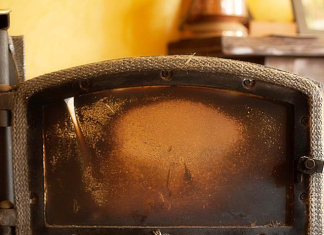Wondering what you could be doing wrong on your property, in order to attract so many wild pests? Well, we’re here to clear some stuff up for you. Below, we look at what might be attracting wildlife to your property, as well as what steps you can take to protect your backyard from attracting unwanted wildlife attention.
Unfortunately, there is no 100% proof method of keeping pests out of your yard, largely because they are resourceful, and versatile creatures. However, by ensuring you remove attractions, and follow some basic backyard protection measures, you can really see a difference.
-
Content Summary
Remove attractions.
The first thing you want to do, when struggling to keep your backyard pest-free, is to figure out what’s attracting the animals, in the first place. Now, chances are your yard’s littered with all sorts of unexpected edibles – and while to you, these may not seem like much, to a raccoon or a possum, they’re the world.
Common attractions for wild animals include pet food and water bowls left out, fallen fruit or seeds from trees, exposed trash cans, as well as bird feeders and bird baths. If you’re in the habit of taking your meals out in the yard, then there’s also a good chance your yard’s full of leftovers and dropped food, as well. Unfortunately, all of that spells wildlife heaven.
So a good first step in deterring wildlife intruders is to simply maintain a clean yard. Pick up fallen fruit and seeds, bring pet bowls indoors during the night, and cover your trash cans, and you’ll already see an improvement.
2. Put up a fence.
Rather obvious, but you’d be surprised how many people forget the benefits of a simple fence around your yard. The best thing about a fence is that it doesn’t just protect against one type of animal, but rather several. Fencing your yard can keep most predators out, though of course, you’ll need to check the fence regularly against holes or cracks, through which animals might squeeze.
When choosing your fence, go for one that can be dug a few feet into the ground, and has a slightly curved edge. This helps to ensure that digging animals like moles also stay off your property.
3. Hire wildlife removal.
You might think that hiring a professional wildlife removal company should only be done after witnessing obvious signs of intrusion on your property. But the truth is, for many homeowners, that’s easier said than done. Some wild animals may be in your yard for weeks, or sometimes, even months, before you catch on.
So hiring someone like District Wildlife Solutions might be just the thing you need to spot the early signs of a wildlife infestation. A professional is capable of noticing things that are amiss on your property, and which may suggest the presence of wild animals. Not only that, a visit from a wildlife removal professional may be advisable even if you’re not dealing with a wildlife infestation, since they will be able to spot early warning signs. That means, they’ll catch on to the dangers associated with easily accessible water or food sources, and why that may attract wild animals in the future.
4. Try store bought deterrents.
If you’re worried about wild animals rummaging through your trash, or digging up your garden in the night, you might also want to invest in a deterring device. The way these devices work is, they’re usually motion-activated, so that they turn on whenever they sense a foreign animal nearby.
Some deterrents use sound, while others will use flashing lights, to scare off the animals, and ward them off your property. Beware, however, as some devices might disturb you or your neighbors, particularly during the nighttime, so make sure you choose a deterrent wisely.
Store bought deterrents can be quite efficient, in the sense that they make your property an undesirable and uninviting habitat for wild animals. If the animals don’t like your yard and find it unfriendly, this will make it less likely they’ll want to settle here, and instead, look to move on.
5. Plant repelling plants.
If you’re not keen on purchasing a motion-activated deterrent, you might try using your own garden to your advantage. The logic behind this is, most intrusive wild animals aren’t keen on strong scents, largely because most of them have a well-developed sense of smell. So pungent scents like garlic, rosemary, peppermint, lavender, or chives tend to bother them.
Once again, this works by making your yard unattractive to the intrusive wildlife, thus essentially telling them to set up shop elsewhere. Another excellent way of making your yard uninhabitable would be to scatter predator urine (like cat, fox or coyote urine) around to indicate the presence of one. Better yet, get yourself a cat!









